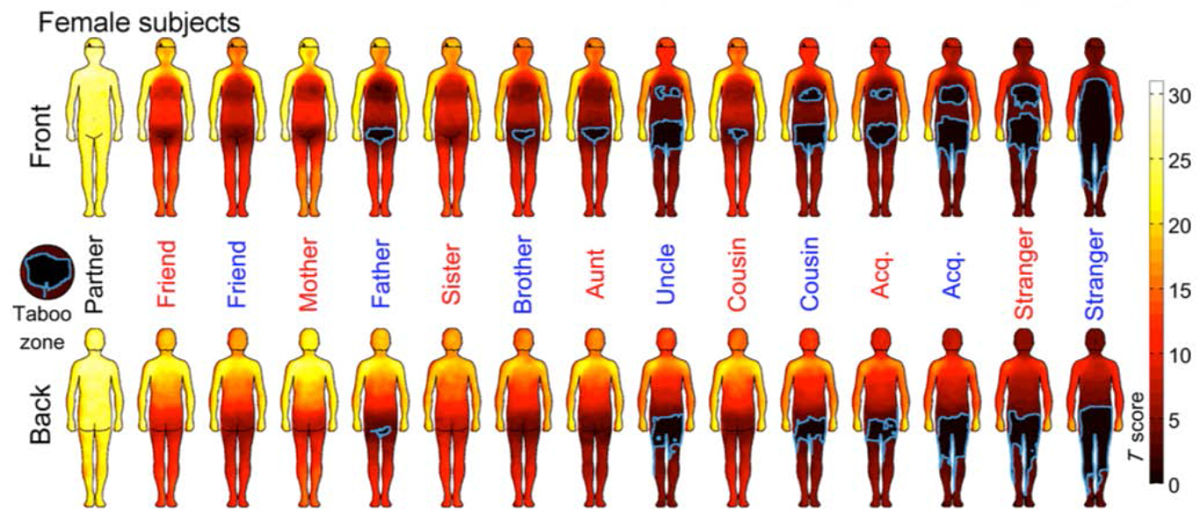Where can someone touch you? Most of us would say it depends on who’s doing the touching but for the first time researchers at the University of Oxford and Finland’s Aalto University have mapped where we allow family, friends and strangers to touch us. Their results are published in journal PNAS this week.
More than 1300 men and women from five countries were asked to colour in areas of the human body that they would allow particular people to touch, from their partner to a stranger and to say for which purposes they would allow touch. The answers were combined to create maps that show how touchable areas of the body are for particular relationships (eg partner, uncle, acquaintance) and also which areas are taboo.
Some results are unsurprising. For example, the maps confirm that women are uncomfortable with being touched by male strangers on most of their body, while men do not want relatives of either gender to touch their genitals. British people are less comfortable with touching than people from the other countries sampled (Finland, France, Italy and Russia). In general, regardless of nationality, the closer the relationship, the greater the area that can be touched.
‘The results indicate that touching is an important means of maintaining social relationships. The touch space map is closely associated with the pleasure caused by touching. The greater the pleasure caused by touching a specific area of the body, the more selectively we allow others to touch it,’ says researcher Juulia Suvilehto from Aalto University.
Other results were less expected. Italians were less comfortable with being touched than Russians, while overall Finns were the most comfortable with being touched. Also, our willingness to be touched does not fade over time.
We also interpret touch depending on the context of the relationship
Professor Robin Dunbar, Department of Experimental Psychology
Oxford University’s Professor Robin Dunbar said: ‘It is the relationship rather than familiarity that matters. A friend we haven’t seen for some time will still be able to touch areas where an acquaintance we see every day would not.
‘We also interpret touch depending on the context of the relationship – we may perceive a touch in a particular place from a relative or friend as a comforting gesture, while the same touch from a partner might be more pleasurable, and from a stranger it would be entirely unwelcome.
‘Touch is universal. While culture does modulate how we experience it, generally we all respond to touching in the same ways. Even in an era of mobile communications and social media, touch is still important for establishing and maintaining the bonds between people.’
